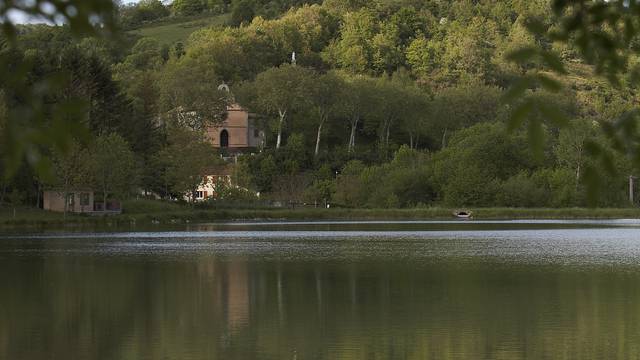History
Quercorb straddles the regions of the Aude and the Ariège, in the piedmont plain of the Pyrenees. "Quer" (rock) and "corb" (curve), denote the curved rock of a castle-city in 1002, as the origin of the name "Quercorb". In this small region, History came to Puivert Castle, but it is music that gives this area its identity. This musical identity has two origins: firstly, the performance of poems by the troubadour Péire d'Alvernhe, who wanted a gathering of the most prestigious troubadours in the 12th century, and secondly, the presence of a magnificent "musicians' room" in the castle keep. Moving towards the present day, the history of Quercorb has been shaped by a strong development in the craft industry. In the 18th century, each village was known for a particular craft: "Rivel de las esquèlhas e de las semals" ("Rivel for cowbells and harvest buckets"), "A Puègvert, fan flabutas e robinhòlas" ("Puivert for flutes and taps"), etc. Blacksmiths, bucket makers, comb makers and knifemakers worked in the villages until the 20th century. This know-how is on display at the Quercorb Museum, where you can also hear troubadour music.
Things to explore
As you walk

Puivert Castle
The Troubadour Trail leads from the museum to the castle. Nine panels intersperse your walk, and recount the history of the troubadours and the court society where they emerged. At the end of the path, the powerful outer wall of this medieval castle protects the curtain wall and the solid keep. Inside are beautiful rooms and gentle musicians...

Puivert lake
You can reach this lake from the museum by taking the Sentier des Métiers, of blacksmiths, musicians and seamstresses, which will take you to the edge of this enchanting little bathing lake. Opposite are high hills, where paragliders take off. Beyond, the Sault plateau extends to Donezan and then to Capcir.
About

Chalabre Castle
Chalabre castle has an amusement park, where jousting, fighting and knighting take place, and you can try archery, heralding and ancient games. As you leave the castle, there is a walk with 30 information panels about this traditional fortified town. Four pathways have replaced the Medieval outer wall and form a circuit of the town. Stay cool in the shade of bicentennial plane trees (find out more).

The green labyrinth
In this dark space, small and twisted trees search for the light, contorted into strange shapes. The rocks are covered in moss, the trunks are clothed in lichen. In the unexpected clearings, the limestone is bleached white, with the traces of the water that has sculpted it still visible. Return into the cool woods, with young oaks and hazel trees... have you encountered a passing fairy, or is it a genette scampering past? Have some goblins left the Brocéliande forest to come and whistle here in the wind? Let your imagination run wild as you walk along the Nature de Nébias trail, close to Puivert (find out more).

This natural, undoubtedly swampy, lake probably once extended across the entire Puivert plain, before allegedly disappearing on the 16th June 1289, when the lake burst its banks, and its water surged at the same time as heavy rainfall flooded the country. As a result, Mirepoix, 30km away, was flooded. Another theory suggests that this lake was slowly and deliberately drained to irrigate arable land, thus giving rise to new hamlets, which are spread around this former lake, and all bear a name with the prefix 'camp' (hamlet).



















